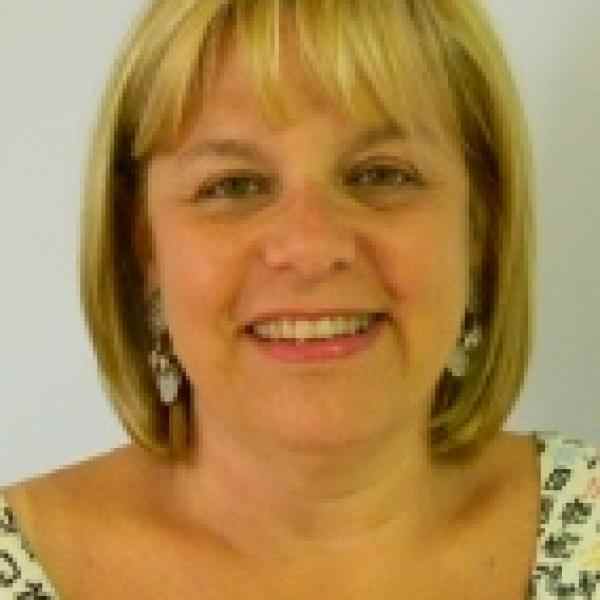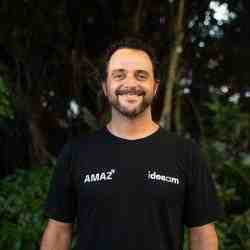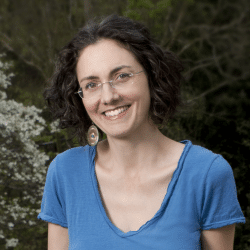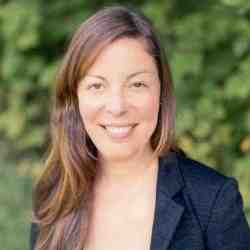Introduction
During a time of crude home repossessions after loan default and resulting widespread payment boycotts, Charlene developed a vital intermediary between hostile lenders and borrowers. Armed with deep insights into the concerns of both groups, her Home Loan Guarantee Company (HLGC) created innovative insurance and risk management products protecting against HIV/AIDS risks and a portion of the borrower financial risk while requiring all parties to bear some risk. These products attracted lenders back into a market that badly needed servicing as the desire for homeownership was ballooning with the impending decline of Apartheid. She is now spreading many of her core ideas to other parts of Africa.
The New Idea
Charlene believed that she could invigorate responsible home loan lending in South Africa by addressing directly the needs of borrowers and the fears of lenders. Essentially, her idea was to close the gap between the actual and the perceived credit risk of low income borrowers. Knowing that lending at scale would only occur when unwarranted lender fears were laid to rest, she and her HLGC developed a series of insurance and reinsurance products that gave them partial protection from defaults. Knowing at the same time that counseling first-time borrowers is key to their performance and that temporary assistance is sometimes needed, she also developed risk mitigation strategies. Her goal was not to become and remain a large lender, but to entice the lending and insurance sectors by showing that this could be a profitable business and to stay in the market only to fill remaining gaps.
The need and the strategy for expanding to the rest of Africa are slightly different than what was relevant in South Africa. While the legal and regulatory environments differ in all countries, with some more advanced than others, most have well established and able lenders and insurers that can originate loans. What they do not have, however, is a robust reinsurance industry or adequate risk management for large scale lending to low-income homebuyers. Therefore, Charlene is taking the reinsurance and risk management aspects of HLGC and partnering with innovative, medium-sized insurance companies in other markets to facilitate bank financing to lower income people, and particularly those living with HIV and AIDS.
The Problem
South Africa in the mid 1980s was fraught with tension and upheaval. The housing market was no different. In fact, housing became hugely politicized throughout the anti-Apartheid struggle as those long denied access to basic human rights had no appetite for being told to give up their homes because of a defaulting loan, especially when many houses were built below standard and had serious faults, and service delivery for basic utilities and sanitation was not as expected. Several instances of entire property repossession - even though the outstanding debt was less than the value of the property - would in time lead to isolated boycotts of mortgage payments in various areas, and then more widespread boycotts of not only mortgage payments, but also payment for services and rent. Burning tires were placed on the roofs of the houses of repossessed properties; banks and sheriffs were being threatened; and eviction processes were all but non-existent. With the due process of the law all but collapsed, the task at hand was figuring out a way to entice lenders to provide loans in a market that was fraught with difficulty, from which most had migrated, and in which they had no appetite to increase their exposure. The increasing prevalence of HIV/AIDS, and the assumed risk it posed to borrowers being able to pay their bills only added further reason for lenders to shy away.
More broadly, throughout Africa, low-income borrowers had and have little access to home loans.
The Strategy
HLGC was formed in 1989 as a guarantee fund to provide support to lenders in this contentious environment, and thus, facilitate access to housing loans for low income persons. Established as a company under Section 21 of the South African Companies Act, it has no shares and may not distribute surplus income or permanent capital to members or directors. At the outset, it provided 15% guarantees towards the down payment, the borrower having to provide 5%, as well as a further 15% for risk reduction, leaving the lender with a 65% exposure. However, take up was slow and when Charlene took the reins of HLGC in 1992, she knew she would have to gain an ear with the community of borrowers, lenders, and the government in order to shift the environment to one in which what HGLC was proposing would resonate.
The first step was to begin serving as an intermediary during the boycotts. When lenders, the sheriff and others were barred from entering the townships, the HLGC was given escorts in – no doubt in part because unlike the other parties, HLGC employs staff from all of the areas in which it is active. They were able to interact with the defaulting borrowers in an attempt to rehabilitate the loans. And where the company could, it did – of the 19% of the loans that went to judgment in that period, only 12% went on to become claims. In the circumstances, this was a good result. The most important outcome, however, besides the ability to save loans where possible, was that HLGC was likely the only non-aligned entity in the country that had firsthand knowledge of what was actually happening on the ground in regard to housing and what the issues and experiences were.
Once the National Housing Forum was established in 1992, HGLC’s unique exposure to the issues landed Charlene an invitation to participate in this initiative which aimed to create a housing strategy and formulate policy to resolve the housing crisis. Charlene was a part of the negotiating team with the banks in regard to their role in housing finance, but the accord that was signed - the Botshabelo Accord - constituted commitments by individual signatories from across the spectrum. Government, civil society and the private sector all committed to house all South African citizens via an adequate and affordable permanent housing residential structure. Most importantly, the accord emphasized the commitment to bring about change in a way that would end the hostilities that dominated the financial institutions, local government and community at large. Government and NGOs would have to focus on service delivery and social housing for the poor; banks would have to step up and begin providing financing for homes for the low income –the mine worker, police officer, teacher.
In this new environment, though still hesitant, lenders became more willing to reenter the market – as long as there was a primary insurer present, a role HLGC filled as other insurance companies were still watching to see just how to navigate such new terrain. As a nonprofit short term specialist insurer, HLGC created a series of innovative underwriting standards and procedures to demystify what it would take to be successful in this new environment. This included the introduction of borrower education to South Africa, which stemmed from HLGC’s belief that knowledge is power and an informed borrower is a better risk. HLGC crafted a comprehensive curriculum and trained a cadre of field staff to effectively sit down with borrowers and explain all of the ins and outs of home loans. HLGC’s hunch of the importance of this work was quickly verified when it saw members of SANCO, the body that was in large part responsible for the boycotts, attend many of its borrower education programs, actively listening to their rights, duties, and obligations in terms of the home loan. This program, drafted by HLGC, was eventually included in the National Credit Act, which was implemented in 2007 and governs credit to consumers. This legislation now places the onus on all lenders to deliver this information to their borrowers. HLGC currently helps execute this work in 732 localities across South Africa.
HLGC’s positive experience with borrower education further convinced it that low income people could make strong borrowers if the right tools were created for them. To this end, HGLC introduced and provided installment guarantees, as well as guarantees for rent-to-buy houses. It grew its collateral replacement indemnity product, covering conventional and non-traditional lenders. In fact, it was this product that that got HLGC one of its first commitments from a group of lenders to begin lending to people earning less than R3500 (USD 500) a month. HGLC also provided a safety net when lenders wanted to try out new lending programs.
But most importantly, HGLC developed strong risk assessment management and control programs and offered them to companies that it encouraged to enter the market. The most innovative of these is its program to manage HIV risk. While a few companies simply sell AIDS life policies or credit guarantees, HLGC manages its HIV and AIDS risk through offering home based voluntary testing and counseling, and providing treatment at no cost to the borrower, where treatment is required. The logic governing this model is that there is no doubt that the AIDS epidemic affects home owners, and their families. Untreated, AIDS often leaves the affected borrower too ill to work, and unable to pay his or her home loan installments, leading to dispossession of the home. HLGC wanted to change this. It wanted to make borrowers aware of the benefit of knowing their status, and if HIV positive, to take the steps to prevent it from turning into AIDS, or if AIDS already exists, to treat it. The tenet is that if a person goes for treatment, and is therefore taking responsibility for health, HLGC will pay the installment on the home loan for as long as the person is incapacitated as a result of the AIDS related illness, and is not able to pay the full installment. So far, HLGC’s experience has been that with early testing and diagnosis, treatment is extremely effective and borrowers are able to pay their mortgage.
To raise the capital needed to provide this insurance, HLGC worked with JP Morgan and another boutique financial firm to create a financial structure to raise an amount sufficient to provide the testing and treatment funds for HLGC’s segment of the market. Once the structure was created, HLGC set out to find the actual investors, which eventually became OPIC and a junior layer composed of a consortium put together by JP Morgan. The arbitrage between the cost of funds and the guaranteed return on investment of those funds produced a risk-free stream of income for HGLC totaling $30 million over ten years.
HGLC also found a treatment partner; set up a call center to provide advice where required; created a “hub” to make appointments for testing, and ensured that it had sufficient fully trained and qualified nurses on contract to provide the counseling and testing of borrowers in their own homes; interacted with laboratories for blood tests; and linked the whole program in with the treatment providers so that it has become seamless. By partnering with Right to Care, HGLC was also able to ensure a supply of high quality HIV medication for a fraction of the cost.
This principle of managing risk through interaction with borrowers, whether in the broader borrower education program, or in the more specific HIV program, rather than through simply pricing for risk by raising premiums is a large part of what HLGC contributes its success to, as well as what it teaches other insurers and lenders. Charlene plans to bring this principle, along with two others that have been vital (1. HLGC requires risk to be shared by all parties involved, including borrower and lender, and 2. HLGC requires lenders to adhere to their own credit criteria and default management procedures) as she expands operations to the rest of Africa.
Over the years, HLGC has been approached by many organizations and governments in other parts of Africa to provide similar housing services. Most of these requests have come through the African Union for Housing Finance, on whose Board she sits. But as HLGC was fully committed in South Africa, it was not able to do so. With the normalization of the South African housing environment, in part from HLGC’s work in permanently narrowing the gap between actual and perceived credit risk, which has resulted in lenders having become willing to assume the low income risk themselves, Charlene now believes it is time to withdraw from the local market. And in fact, she has to, because as HLGC is a non-profit company, it is not allowed to compete with for profit companies given the unfair advantage of being tax exempt.
HLGC prepares to leave the South African insurance market having provided 79,000 guarantees/indemnities with a total value of R780,000,000 (or 100 million USD), thereby facilitating approximately R4.5 billion (or 600 million USD) of loans for 79,000 homes, which house approximately 300,000 people, many of whom are HIV positive. Moreover, the banks’ low income loans are performing well, with default rates of less than 2 percent.
As far as expansion, regulatory approval has officially been given in Rwanda and Uganda, and is imminent in Kenya and Ghana, while the process is just beginning in Zambia and Tanzania. The appropriate companies and systems required to implement the program have been established, including an IT based system which will allow HGLC to manage the entire administrative process on behalf of the local insurers. In time, when the risk and risk management skills have largely been transferred, so will the system, to enable the various insurers in the countries to run and manage the programs themselves. Pilot insurers and lenders have been identified, and the respective due diligence completed. Charlene has even begun introducing housing finance education, using insurers as well as training locals to provide the interaction with defaulting borrowers that has been proven so vital in HLGC’s proven system. All in all, response has been overwhelmingly positive, as the benefit to the countries is easily discernible: not only does it create a housing market, and with that affects the development of allied industries, but it also affects the financial offerings in each country, including the need and ability to access long term capital.
In five years time, Charlene plans to be active in 15 countries throughout Africa, with each at different stages of the handover process. She is in the process of tapping the capital markets once again to create a philanthropic bond that anyone can buy into, and from whose income – expected to be at least $250 million – the next five years can be funded.
The Person
Born and raised in South Africa, Charlene has never been able to bear unfairness and injustice. At age 18, she found herself working at a law firm that took a case that would forever have a profound effect on her. After being found guilty of snatching a woman’s handbag, a young man that her team was defending was sentenced to prison, and Charlene had the unfortunate task of surrendering him to the Fort, a local and notorious prison. She remembers sitting on the steps of the Fort, crying, thinking that there had to be a better way. There was no doubt in her mind that the young man would learn far more criminal skills within the prison, and would be released in time, resentful, and possibly fully criminal. What a travesty, an absolute waste of life, Charlene thought.
Deciding that what South Africa needed was a more structured approach to presenting the offender as a human being to the courts for sentencing, Charlene shifted her plans from studying law to studying criminology. Historically, this had been provided primarily by state-employed social workers, or psychologists or psychiatrists. All of these disciplines are good, Charlene believed, but none of them were specialized in causes of crime. They understood people, but not people who commit crimes. Criminology in and of itself, was not yet a profession in South Africa, and though sometimes used by the police force, Charlene knew that criminologists were indeed specialists in understanding the cause and effect of crime, not only the forensics. To this end, and with the assistance of several people in the South African Bar and judiciary after completing her initial degree, she set to prove that criminologist had a role in sentencing, as they could consider each crime in terms of what she would call the “trilogy” of the crime, society and the offender. They would advise the court in terms of the best possible sentence for all –to ensure the long term safety of the community, and prevent recidivism, while punishing the individual. Charlene was involved in over 250 trials to prove criminologists had a role to play in sentencing. Her work hit a climax when Justice Richard Goldstone supported her in a case that was appealed on the grounds that her influence on the sentencing as a criminologist was inappropriate. The outcome of all this was that criminologists became accepted as expert witnesses for the purposes of sentencing. Charlene completed her doctoral degree, and was involved in some of the more difficult and sensitive, sometimes political, cases in South Africa, many of which formed the basis of her doctoral thesis entitled “The role of Criminologists in Sentencing” - which was a reference work book for training criminologists for several years.
After feeling that she had helped lay the infrastructure for a more balanced approach in sentencing, and facing personal financial hardship (including abruptly finding herself in a position of having to raise her children as a single mother), in 1992 Charlene answered an ad to join the HLGC.
When Charlene took over the moribund HLGC, she was asked to “come in and make it work.” Charlene would soon give it an animating idea and borrow R100 million (14 million USD), secured by a series of zero coupon bonds. It leveraged that capital and accessed international reinsurance, in the process creating its own captive insurance company. HLGC also became a registered and licensed short term specialist insurer, which would eventually achieve a AA+ (domestic scale) rating.
Charlene’s mind set is one that melds sustainable business with social needs and requirements. She believes that in the housing arena, “if you don’t pay you can’t stay, unless you can’t pay – in which case, we should do everything possible to try and resolve the issues. In terms of HIV – if you take responsibility for your HIV status and treatment if required, we should do everything we can to ensure that you remain housed when you are unable to pay your way because of your illness.” Charlene remains motivated by the fact that everything she does has an effect on somebody’s ability to own a house, get access to world class AIDS treatment, and hopefully, live a better life.
Charlene has twice received the National Housing Person of the Year Award.




